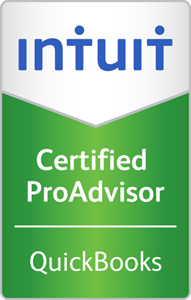Small businesses have small budgets. Knowing how to manage your business’s budget effectively can determine whether it thrives or dies.
Why You Need a Budget
Every company across every industry has a slightly different budget. All of these, however, have enough common-ground that you can begin their budgets using the same basic framework.
The goal of a budget is to establish your average revenue and overhead per month. That overhead includes any and all expenses, such as labor, utilities, raw materials, and so on. Based on this information, you are able to predict whether you will have enough money to expand your business or add to your savings. On the other side of the coin, you may find that you cannot afford to hire three new employees yet, and have to settle with one or two until you can generate more revenue.
Building Your Budget
There are five steps that you need to follow to establish your working budget.
Itemize Your Income Sources
The first step is to determine how much money your business brings in each month.
This list should include all revenue sources. Start with your sales figures and move on from there. Depending on your business model, this may include endowments and/or interest on savings.
Determine Your Fixed Costs
You need to track out every potential expense. Build a spreadsheet to estimate both the percentage and total dollar amount of your revenue that will need to be spent on operations. Your expense spreadsheet should cover overhead items such as rent, taxes, insurance, raw materials, staffing, advertising, and utilities.
Review your bank statements to easily spot your fixed bills and how much they cost each month.
Estimate High
Any item that does not have a fixed monthly price is called a variable expense.
Your expenses are not carved in stone. As such, you should round your variable expenses up to be safe. That way, if prices for materials unexpectedly spike, you won’t be left at a loss. Keeping a financial buffer will provide breathing room when expenses exceed your expectations.
Doing this also puts a bit more padding in your business savings each month. You can save up a business nest-egg for a rainy day, or you can use that to later reinvest in your company.
Plan Big Purchases
Having an established budget allows you to fit new investments into the plan further down the road. If you plan on buying a new company van to add to your fleet in six months, an established budget allows you to see how much you will have saved by that point, how much you should expect to earn between now and then, and how much you will have after the purchase.
Putting Together All the Parts
Whereas the first four steps entail gathering all of the information you need, the last step is just to piece that information together. After doing so, you will have a clear picture of your average monthly revenue, fixed costs, variable expenses, and one-time big purchases.
Drawn out, this will look like:
Income sources:
- Loans
- Investment income
- Product sales
- Savings
- Other
Fixed costs:
- Utilities
- Internet
- Employee salaries
- Rent/mortgage
- Website hosting
- Bank fees
- Government fees/taxes
- Legal services
- Accounting services
- Insurance
Variable expenses:
- Commissions
- Advertising
- Transportation
- Other marketing costs
- Printing services
- Events
- Raw materials
One-time purchases:
- Employee computers/laptops
- Software
- Furniture
- Gifts
- Office supplies
The Final Step
Go back and update your budget regularly. With each new service provided, business partnership, hire, or addition to your truck fleet, your revenue and overhead costs change. Stay on top of those changes by updating your budget, making sure it reflects your business’s current situation.
For more in-depth financial help, call us at (206) 734-6080, email us at [email protected], or use our Contact page.
Featured photo labeled for commercial use, Pixabay.com








